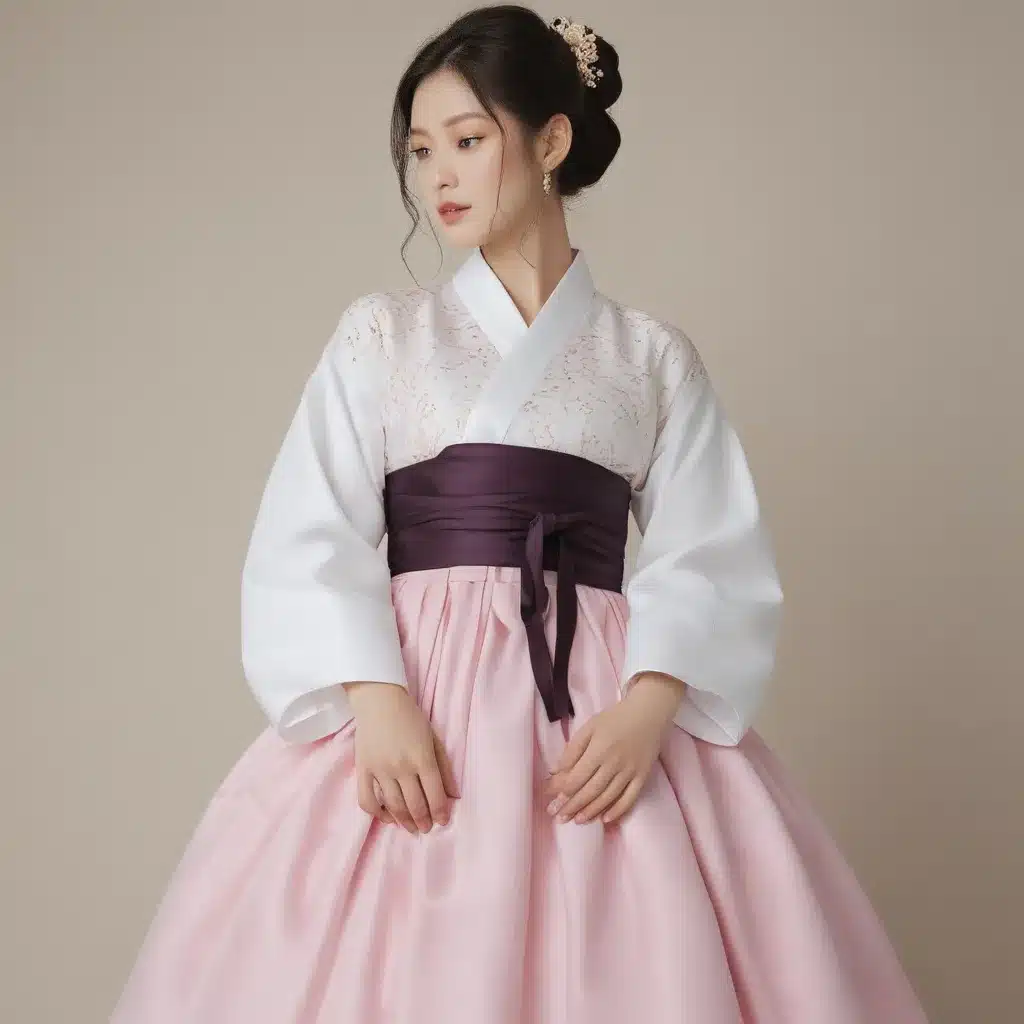
Unveiling the Captivating Metamorphosis of Korea’s Iconic Attire
When I first stepped foot in Seoul, the vibrant city that never sleeps, I was immediately mesmerized by the striking silhouettes of traditional Hanbok adorning the streets. These elegant garments, with their bold colors and intricate embroidery, stood out like stunning works of art amidst the modern skyscrapers and bustling crowds. Little did I know that I was about to embark on a fascinating journey through the evolution of this beloved Korean cultural icon.
Echoes of the Past: The Timeless Allure of Traditional Hanbok
As I delved deeper into the history of Hanbok, I discovered a rich tapestry of stories woven into the very fabric of Korean identity. Tracing its roots back to the Three Kingdoms period, the Hanbok has evolved over centuries, reflecting the cultural and societal shifts that have shaped the Korean nation. From the vibrant hues and graceful silhouettes of the women’s Hanbok to the more understated yet equally elegant designs of the men’s attire, each element of this traditional garment holds profound historical significance.
Throughout Korea’s history, the Hanbok has served as a symbol of purity, unity, and resistance, becoming an integral part of the country’s cultural identity. I couldn’t help but marvel at the way this timeless attire has weathered the tides of change, managing to maintain its allure even as Western influences gradually crept into Korean fashion during the late 19th and early 20th centuries.
The Modern Hanbok Renaissance: Blending Tradition and Modernity
Just when I thought the Hanbok might fade into the annals of history, a remarkable renaissance began to unfold. Designers and fashion enthusiasts, driven by a desire to preserve and reinterpret this cultural treasure, began to create modern interpretations of the Hanbok. These contemporary versions, known as “Modern Hanbok,” have seamlessly integrated traditional elements with a fresh, contemporary aesthetic.
One of the striking differences between the traditional and modern Hanbok is the silhouette. While the classic Hanbok is characterized by its broad, flowing skirts and fitted jackets, the Modern Hanbok often features more streamlined, slimmer shapes, making them more practical for everyday wear. Designers have also experimented with a wide range of colors and fabrics, blending the timeless hues of the past with bold, vibrant shades and even incorporating modern materials like satin and linen. The result is a mesmerizing fusion of tradition and modernity that captivates the eye and heart.
Embracing the Contemporary: Hanbok’s Growing Popularity in K-pop and Beyond
As I wandered the streets of Seoul, I couldn’t help but notice the growing presence of the Modern Hanbok in the city’s fashion landscape. Korean idols and celebrities have been leading the charge, incorporating these contemporary interpretations of the Hanbok into their fashion choices for public appearances, performances, and photoshoots. From the iconic BTS members donning Hanbok-inspired outfits in their “IDOL” music video to BLACKPINK’s Rosé, Jisoo, Lisa, and Jennie showcasing their Modern Hanbok flair in the “How You Like That” video, these fashion-forward icons have played a pivotal role in popularizing this unique blend of tradition and modernity.
But it’s not just the K-pop world that’s embracing the Modern Hanbok. I’ve noticed a growing trend among the diaspora, where people of diverse cultural backgrounds are exploring ways to connect with their heritage through traditional dress. The Modern Hanbok, with its gender-neutral approach and accessibility, has become a popular choice for those seeking to celebrate their cultural identity while still feeling comfortable and confident in their everyday lives.
Customizing Your Own Piece of Korean Heritage
As I delved deeper into the world of Modern Hanbok, I discovered that the opportunities for personalization are endless. Designers often offer customization options, allowing customers to choose their preferred colors, fabrics, and details, resulting in a truly unique and one-of-a-kind piece. This level of customization not only ensures that the Modern Hanbok truly resonates with the wearer’s personal style but also imbues the garment with a profound sense of connection to Korea’s rich cultural heritage.
Embracing the Future: The Endless Possibilities of the Modern Hanbok
As I strolled through the streets of Seoul, admiring the stunning array of Modern Hanbok on display, I couldn’t help but feel a sense of excitement and wonder for the future of this remarkable cultural icon. With designers and fashion enthusiasts constantly pushing the boundaries, the Modern Hanbok continues to evolve, incorporating new materials, silhouettes, and design elements that capture the essence of tradition while seamlessly integrating with the demands of contemporary life.
Whether you’re a K-pop fan, a lover of fashion, or simply someone who appreciates the beauty and significance of cultural heritage, the Modern Hanbok offers a captivating and truly unique way to engage with the rich tapestry of Korean identity. So, the next time you visit Seoul, be sure to immerse yourself in the enchanting world of the reinvented Hanbok and discover the endless possibilities it holds for the future.

